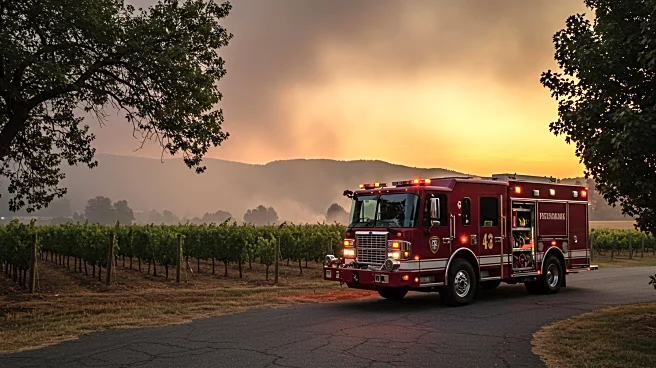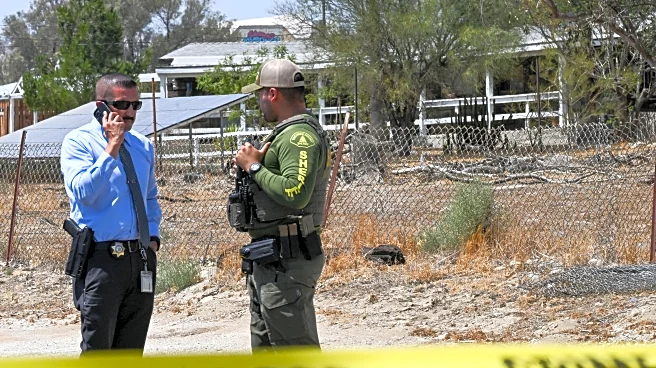What's Happening?
A rapidly spreading wildfire in California's Napa Valley has led to mandatory evacuation orders as firefighters work to contain the blaze. Known as the Pickett Fire, it has burned approximately 6,531 acres since its outbreak on Thursday. The California Department of Forestry and Fire Protection reported that as of late Saturday night, the fire was 11% contained. The fire began near Calistoga, and its cause is still under investigation. Firefighting efforts have been bolstered by night-flying helicopters and drones, which have been crucial in battling the fire during nighttime hours. The region is familiar with such challenges, having experienced the Glass Fire in 2020, which burned over 11,000 acres. Current efforts are guided by leadership with experience from the previous fire. The situation is exacerbated by a heat wave affecting the West Coast, increasing fire risks in Southern California, where red flag warnings are in effect.
Why It's Important?
The wildfire poses significant threats to the Napa Valley region, known for its vineyards and wine production, which are vital to the local economy. Mandatory evacuations disrupt communities and businesses, potentially leading to economic losses. The fire's impact is heightened by the ongoing heat wave, which raises the risk of further fires and complicates containment efforts. The situation underscores the challenges faced by firefighting agencies in managing natural disasters exacerbated by climate conditions. The experience from the 2020 Glass Fire provides valuable insights for current suppression strategies, highlighting the importance of preparedness and effective leadership in crisis situations.
What's Next?
Firefighters will continue their efforts to contain the Pickett Fire, utilizing aerial support and ground crews. Investigations into the fire's cause will proceed, potentially informing future prevention strategies. As the heat wave persists, authorities may issue additional warnings and advisories to mitigate fire risks. Local communities will need to assess the damage and begin recovery efforts once the fire is contained. The situation may prompt discussions on improving fire management practices and infrastructure resilience in the face of climate-related challenges.
Beyond the Headlines
The wildfire highlights broader environmental and policy issues, including the impact of climate change on fire frequency and intensity. It raises questions about land management practices and the need for sustainable approaches to mitigate fire risks. The event may influence public policy discussions on climate adaptation and resource allocation for emergency services. Additionally, it underscores the importance of community preparedness and resilience in facing natural disasters.














